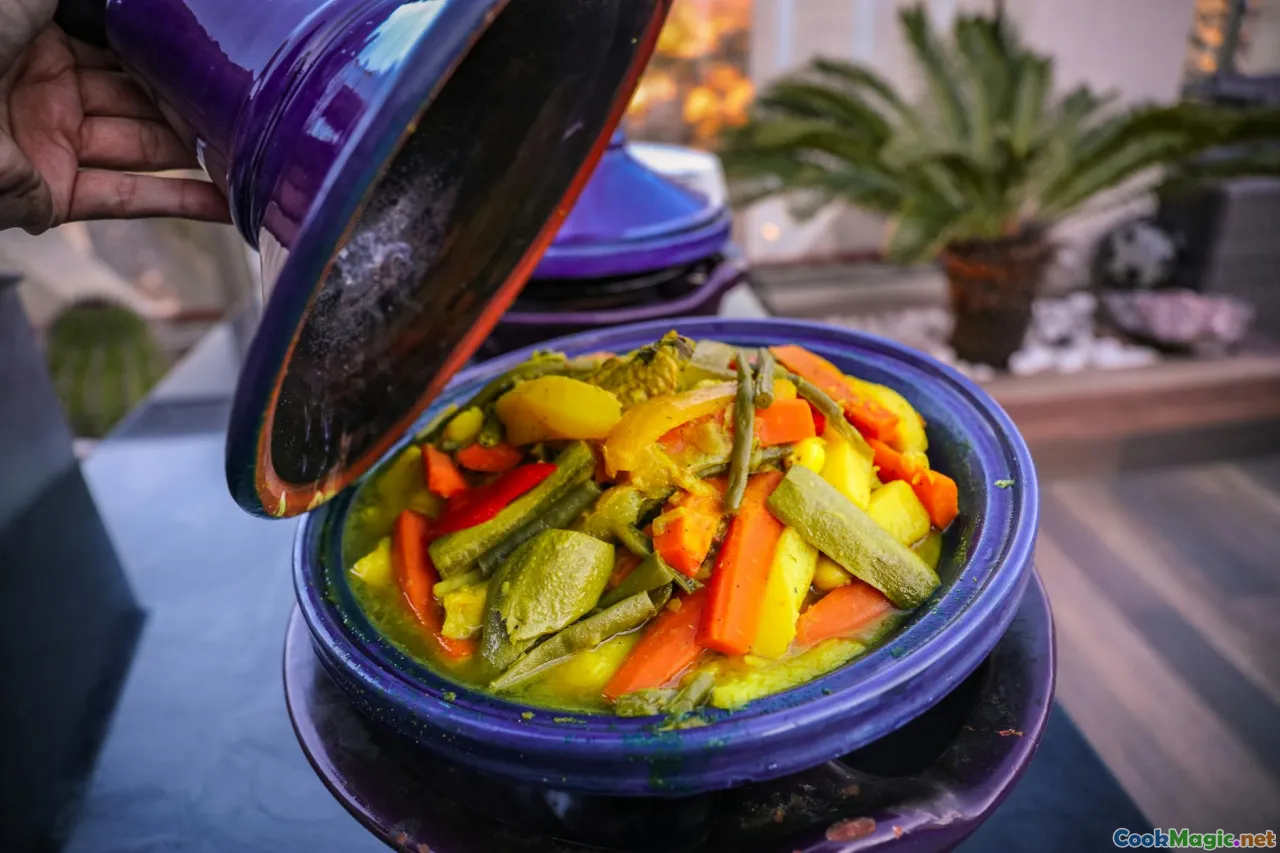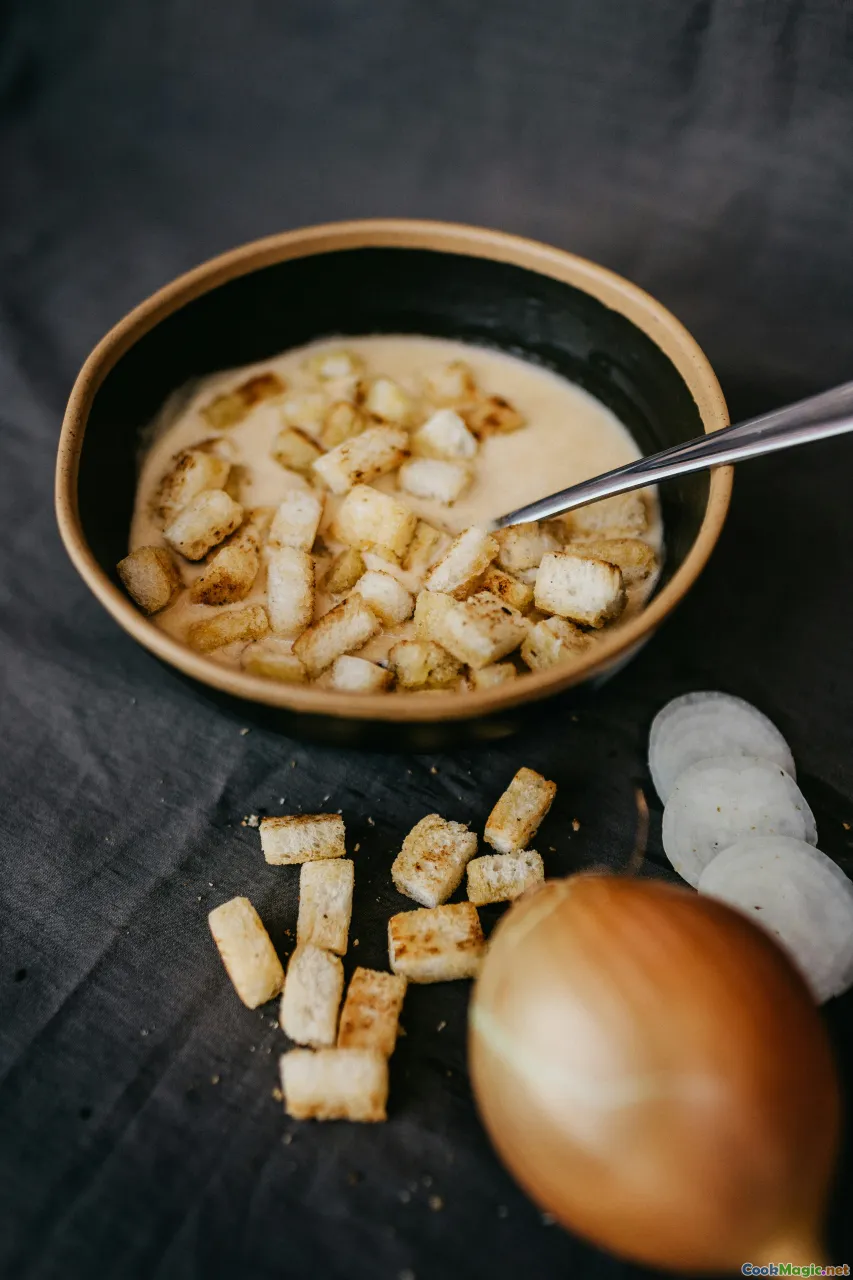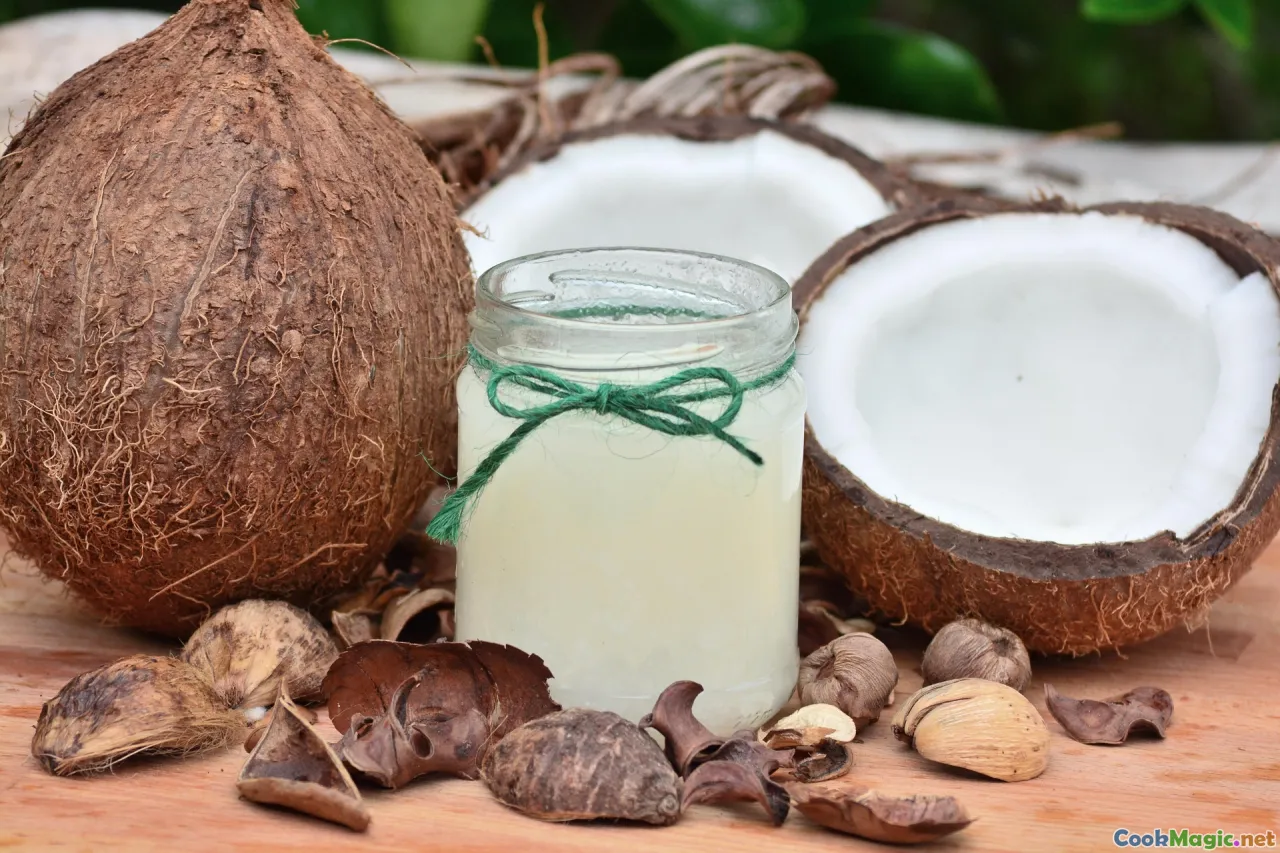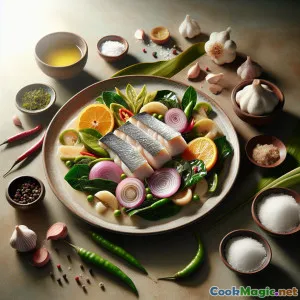
Panay-Kürbis-Kokos-Eintopf: Cremiges Filipino-Gefühl
(Panay Coconut Squash Stew: Creamy Filipino Comfort)
(0 Bewertungen)0
1,209
August 01, 2025
Problem melden
Zutaten
-
600 grams Kabocha-Kürbis
(Also known as Japanese pumpkin; peeled and cubed.)
-
400 ml Kokosmilch
(Full-fat for creamy texture.)
-
2 medium Schalotten
(Dünn geschnitten.)
-
20 grams Ingwer
(Fresh, peeled and julienned.)
-
3 cloves Knoblauch
(Zerkleinert.)
-
100 grams Lange Bohnen (sitaw)
(Cut into 2-inch pieces.)
-
1 medium Rote Paprika
(Sliced into strips.)
-
2 tbsp Rapsöl
(Or any neutral cooking oil.)
-
1 tbsp Fischsauce
(Optional for depth; use soy sauce for a vegetarian option.)
-
300 ml Gemüsebrühe
(Or water.)
-
1 tsp Chili-Flocken
(Nach Geschmack anpassen.)
-
0.5 tsp Salz
(Nach Geschmack.)
-
0.5 tsp Gemahlener schwarzer Pfeffer
(Nach Geschmack.)
-
10 grams Frischer Koriander
(Gehackt zur Garnitur.)
(Also known as Japanese pumpkin; peeled and cubed.)
(Full-fat for creamy texture.)
(Dünn geschnitten.)
(Fresh, peeled and julienned.)
(Zerkleinert.)
(Cut into 2-inch pieces.)
(Sliced into strips.)
(Or any neutral cooking oil.)
(Optional for depth; use soy sauce for a vegetarian option.)
(Or water.)
(Nach Geschmack anpassen.)
(Nach Geschmack.)
(Nach Geschmack.)
(Gehackt zur Garnitur.)
Nährwerte
- Portionen: 4
- Portionsgröße: 1 Schüssel (ca. 300 g)
- Calories: 280 kcal
- Carbohydrates: 40 g
- Protein: 6 g
- Fat: 13 g
- Fiber: 7 g
- Sugar: 8 g
- Sodium: 700 mg
- Cholesterol: 0 mg
- Calcium: 70 mg
- Iron: 2 mg
Anweisungen
-
1 - Sauté Aromatics:
Heat oil in a heavy-bottomed pot over medium heat. Add shallots, ginger, and garlic; sauté until fragrant and softened.
-
2 - Add Squash:
Stir in the cubed kabocha squash and cook, stirring, for 2-3 minutes until slightly golden on the edges.
-
3 - Deglaze & Simmer:
Pour in the vegetable broth, scraping the bottom, and bring to a simmer.
-
4 - Coconut Cooking:
Pour in coconut milk; reduce heat and continue to cook, stirring occasionally, until the squash is tender (about 15 minutes).
-
5 - Add Vegetables:
Stir in the long beans and red bell pepper (if using). Cook uncovered for about 7 minutes, or until beans are bright and tender-crisp.
-
6 - Season & Finish:
Stir in fish sauce (or soy sauce), chili flakes (if using), salt, and pepper. Adjust seasoning to taste.
-
7 - Garnish & Serve:
Ladle into bowls, garnish with chopped cilantro, and serve hot with steamed jasmine rice.
Heat oil in a heavy-bottomed pot over medium heat. Add shallots, ginger, and garlic; sauté until fragrant and softened.
Stir in the cubed kabocha squash and cook, stirring, for 2-3 minutes until slightly golden on the edges.
Pour in the vegetable broth, scraping the bottom, and bring to a simmer.
Pour in coconut milk; reduce heat and continue to cook, stirring occasionally, until the squash is tender (about 15 minutes).
Stir in the long beans and red bell pepper (if using). Cook uncovered for about 7 minutes, or until beans are bright and tender-crisp.
Stir in fish sauce (or soy sauce), chili flakes (if using), salt, and pepper. Adjust seasoning to taste.
Ladle into bowls, garnish with chopped cilantro, and serve hot with steamed jasmine rice.
Mehr über: Panay-Kürbis-Kokos-Eintopf: Cremiges Filipino-Gefühl
Panay Coconut Squash Stew: Story, Tips, and Cultural Insight
If you seek a taste of Filipino warmth and rustic comfort, Panay Coconut Squash Stew is a vivid introduction to both. With roots born on Panay Island in the Philippines, this dish distills the velvety richness of coconut milk and tropical sweetness of kabocha squash ("kalabasa") into every mouthful.
History and Origins
In the Visayan region of the Philippines, kabocha squash is an agricultural staple and forms the hearty basis for a variety of home-cooked meals. The use of coconut milk in stews is distinctly Filipino, tracing to the prevalence of coconut palms in many regions including Panay. This creamy stew adapts the spirit of classic dishes like ginataang kalabasa, infusing them with regional touches—such as long beans (sitaw) or other strengthening, garden-fresh greens—based on season or tradition. What distinguishes this recipe is its gentle, simple seasoning, respecting the gentle flavors of squash and coconut, while providing enough backbone from the aromatics.
Unique Aspects
- Vegetarian with Flexibility: The addition of fish sauce is optional here; the dish remains comforting and flavorful without.
- Uncomplicated Luxury: Using full-fat coconut milk keeps this stew creamy—even without animal fat—and lends a natural sweetness.
- Brightness and Color: Red bell peppers and green long beans appeal visually and nutritionally. Ginger and chili flakes elevate the stew and counteract any heaviness gracefully.
Culinary Tips
- Squash Choice: Kabocha squash is the preferred variety for its personal blend of sweetness and texture—the skin is even edible when young—but if you can only find butternut or another pumpkin, adapt as needed.
- Rice Partner: In Filipino homes, this stew is often served over hot steamed rice, which is vital for soaking up the luscious coconut sauce.
- Season as You Go: The success of a coconut stew lies as much in balanced seasoning (salty, salty, and even a pinch of sugar at times) as in quality produce.
- Texture Varieties: Some may choose to mash a few squash pieces against the side of the pan for extra creaminess, or, conversely, leave the squash firmer for distinct bite.
Modern and Personal Perspectives
Making Panay Coconut Squash Stew is like stirring together sunshine and rain in one comfort bowl. It's versatile—effortlessly welcoming leftovers, tofu cubes, or other seasonal veggies. The classic Filipino preference for strong flavors in a fragrant, nourishing vehicle makes this stew a favorite even beyond its homeland.
I've prepared this for friends unfamiliar with Filipino cuisine and found they immediately relate this dish to comforting fall soups or even distant Southeast Asian curries. For children and adults alike, it's warming, gentle, never overwhelming—the way an Oriental-leaning home stew should be.
Nutrition, Environment, and Well-being
Coconut milk is rich but comes with medium-chain triglycerides that give slow energy—especially combined with fiber-rich squash and beans. You’re getting plant-based nutrients, steady carbohydrates, and a flavor-packed bowl with a small list of budget-friendly, wholesome ingredients. If you wish, substitute the fish sauce with light soy sauce for a vegan bowl without sacrificing umami.
Serving and Presentation Ideas
Sprinkle with fresh cilantro or green onions to finish. Crunchy roasted peanuts (a Filipino favorite topping) provide textural diversity, while a wedge of calamansi lime squeezed over the bowl is authentically refreshing.
Conclusion
Panay Coconut Squash Stew is, at its heart, a homespun and gently innovative recipe that brings out Panay Island’s mellow best. Try this, and you invite a Filipino sunbeam into both your kitchen and your soul—a reminder that even humble roots yield luxury, flavor, history, and belonging.

























